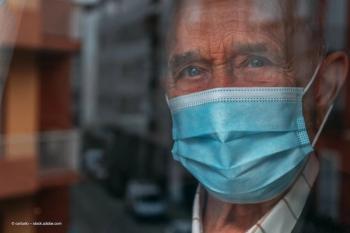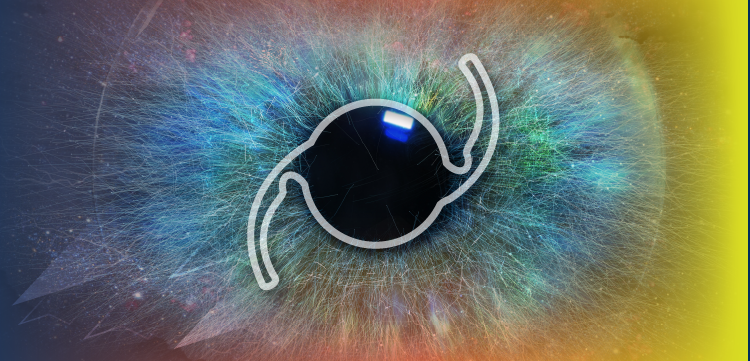
- Ophthalmology Times Europe January/February 2025
- Volume 21
- Issue 1
- Pages: 22 - 23
A new home treatment for amblyopia
Binocular eye tracking could serve as alternative to patching and provide visual acuity gains with heightened adherence rates
A binocular, eye tracking–based amblyopia home treatment (CureSight; NovaSight) has been shown to be at least as effective as patching, according to the study's lead author Tamara Wygnanski-Jaffe, MD, of the Goldschleger Eye Institute; head of the Paediatric Ophthalmology and Strabismus Clinic, Sheba Medical Center, Tel HaShomer, Israel; and the Faculty of Medicine, Ophthalmology, Tel Aviv University, Israel.
The study,1 published in the American Journal of Ophthalmology, found that patients who adhered to the treatment protocol using the amblyopia home treatment program obtained greater visual acuity (VA) increases compared with those who used patching to treat amblyopia.
Why binocular viewing?
Wygnanski-Jaffe and colleagues explained that “binocular presentation encourages the visual system to combine the information inputs received from both eyes, to either perform the treatment task or to view the entire presented scene passively while perceiving the image’s fine details by the amblyopic eye. It has been suggested that dichoptic presentation reduces the interocular suppression that is thought to be one of the underlying mechanisms of amblyopia.”2,3
However, the effectiveness of binocular presentation compared with patching remains to be determined. Binocular treatment has shown promise in pilot studies, but the randomised controlled trials have reported mixed results.4-13
To sort out the discrepancies, the investigators compared the effectiveness and safety of a novel binocular eye tracking–based home treatment (CureSight) with patching to treat amblyopia in a prospective, masked, randomised, controlled noninferiority trial. The system was evaluated in a multicentre, multinational setting.
A total of 149 children, aged 4 to younger than 9, with anisometropic, small-angle strabismic or mixed-mechanism amblyopia were randomly assigned to receive either binocular treatment (n = 75) or patching (n = 74). The children in the binocular group used CureSight for 90 minutes daily, 5 days a week, for 16 weeks (120 total treatment hours), while the control group engaged in patching for 2 hours daily, 7 days a week, for 16 weeks (224 hours).
The primary study outcome was the mean improvement from baseline in VA in the amblyopic eye at week 16 in both study groups (noninferiority of ≤ 0.10 logMAR). The investigators also looked at stereoacuity and binocular VA changes from baseline to week 16.
The investigators sought to add a second US-based cohort following the pivotal study, using a similar protocol to the pivotal study that showed noninferiority of the CureSight treatment compared with patching. They wanted to enlarge the pooled sample size sufficiently so that when added to already evaluated outcomes, the efficacy of the binocular treatment could be tested in participants who received at least 60% of the prescribed cumulative dose, they explained.
Seeking an alternative
The investigators reported that the children in the binocular group had a mean improvement from baseline at week 16 that was noninferior to that in the patching group. The difference between the two groups in
improvement from baseline was 0.034 logMAR (95% CI, –0.009
to 0.076). The investigators reported, “In the per-protocol data set, the mean improvement from baseline at week 16 in the binocular treatment group was superior to that in the patching group (least-squares mean difference between groups in improvement from baseline: 0.05 logMAR [95% CI, 0.007-0.097]).” In week 16, both groups showed a significant median stereoacuity improvement, with no significant difference between groups in the magnitude of improvement in both the modified intention-to-treat and the per-protocol datasets.
The binocular VA improved in both groups (P <.0001). The median adherence in the modified intention-to-treat binocular treatment group (94.0%) was significantly higher than in the patching group (83.9%; P = .0038).
“The significance of these findings is that in the studied group of patients, binocular treatment was at least as effective as patching, with significantly better adherence. Based on several study results, it is reasonable to suggest that binocular treatment is safe, engaging and can serve as an alternative treatment to patching,” Wygnanski-Jaffe commented.
Principal investigator perspective
Nicholas Sala, DO, of Pediatric Ophthalmology of Erie, in Pennsylvania, and a principal investigator of the study, described his experience. Of his 19 patients, 10 were randomly assigned to the initial CureSight treatment. One withdrew due to loss of adherence, another withdrew because of being too busy, and a third had minimal improvement (and has not improved since with standard treatment). The other 7 had promising improvement.
Sala shared the case of a boy aged 5 years who was treated for 16 weeks. At screening, the right and left eye VAs were, respectively, 20/25 and 20/100. At 16 weeks, when he stopped treatment, the respective VAs were 20/20 and 20/32. The 16-week VAs were maintained at 28 weeks.
“The entire body of CureSight clinical trial evidence—and the most recent findings in particular—demonstrated that this treatment can greatly benefit our patients,” Sala concluded. “As a clinical investigator in a CureSight clinical trial, I had the opportunity to offer this treatment to my patients, and I found that it is easy to use, effective and appealing to children.”
References
Wygnanski-Jaffe T, Kushner BJ, Moshkovitz A, Belkin M, Yehezkel O; CureSight Pivotal Trial Group. High-adherence dichoptic treatment versus patching in anisometropic and small angle strabismus amblyopia: a randomized controlled trial. Am J Ophthalmol. 2024;269:293-302. doi:10.1016/j.ajo.2024.08.011
Hess RF, Mansouri B, Thompson B. A binocular approach to treating amblyopia: antisuppression therapy. Optom Vis Sci. 2010;87(9):697-704. doi:10.1097/OPX.0b013e3181ea18e9.
Birch EE, Jost RM, De La Cruz A, et al. Binocular amblyopia treatment with contrast-rebalanced movies. J AAPOS. 2019;23(3):160.e1-160.e5. doi:10.1016/j.jaapos.2019.02.007.
Birch EE, Li SL, Jost RM, et al. Binocular iPad treatment for amblyopia in preschool children. J AAPOS. 2015;19(1):6-11. doi:10.1016/j.jaapos.2014.09.009
Knox PJ, Simmers AJ, Gray LS, Cleary M. An exploratory study: prolonged periods of binocular stimulation can provide an effective treatment for childhood amblyopia. Invest Ophthalmol Vis Sci. 2012;53(2):817-824. doi:10.1167/iovs.11-8219. Correction. Invest Ophthalmol Vis Sci. 2012;53(10):6196.
Li SL, Reynaud A, Hess RF, et al. Dichoptic movie viewing treats childhood amblyopia. J AAPOS. 2015;19(5):401-405. doi:10.1016/j.jaapos.2015.08.003
Xiao S, Gaier ED, Mazow ML, et al. Improved adherence and treatment outcomes with an engaging, personalized digital therapeutic in amblyopia. Sci Rep. 2020;10(1):8328. doi:10.1038/s41598-020-65234-3
Manny RE, Holmes JM, Kraker RT, et al; Pediatric Eye Disease Investigator Group. A randomized trial of binocular Dig Rush game treatment for amblyopia in children aged 4 to 6 years. Optom Vis Sci. 2022;99(3):213-227. doi:10.1097/OPX.0000000000001867
Xiao S, Angjeli E, Wu HC, et al; Luminopia Pivotal Trial Group. Randomized controlled trial of a dichoptic digital therapeutic for amblyopia. Ophthalmology. 2022;129(1):77-85. doi:10.1016/j.ophtha.2021.09.001
Holmes JM, Manh VM, Lazar EL, et al; Pediatric Eye Disease Investigator Group. Effect of a binocular iPad game vs part-time patching in children aged 5 to 12 years with amblyopia: a randomized clinical trial. JAMA Ophthalmol. 2016;134(12):1391-1400. doi:10.1001/jamaophthalmol.2016.4262
Yao J, Moon HW, Qu X. Binocular game versus part-time patching for treatment of anisometropic amblyopia in Chinese children: a randomised clinical trial. Br J Ophthalmol. 2020;104(3):369-375. doi:10.1136/bjophthalmol-2018-313815
Manh VM, Holmes JM, Lazar EL, et al; Pediatric Eye Disease Investigator Group. A randomized trial of a binocular iPad game versus part-time patching in children aged 13 to 16 years with amblyopia. Am J Ophthalmol. 2018;186:104-115. doi:10.1016/j.ajo.2017.11.017
Wygnanski-Jaffe T, Kushner BJ, Moshkovitz A, Belkin M, Yehezkel O; CureSight Pivotal Trial Group. An eye-tracking–based dichoptic home treatment for amblyopia: a multicenter randomized clinical trial. Ophthalmology. 2023;130(3):274-285. doi:10.1016/j.ophtha.2022.10.020
Tamara Wygnanski-Jaffe, MD | E: [email protected]
Wygnanski-Jaffe is head of the Paediatric Ophthalmology and Strabismus Clinic at Sheba Medical Center in Israel, and president of the International Pediatric Ophthalmology and Strabismus Council.
Nicholas Sala, DO | E: [email protected]
Sala is with Pediatric Ophthalmology of Erie in Pennsylvania. He is an active member of the Pediatric Eye Disease Investigator Group, a consortium of paediatric ophthalmologists in the US and Canada.
Articles in this issue
10 months ago
IOL design puts a new spin on vision11 months ago
Helping patients with glaucoma manage mental health11 months ago
Shifting the narrative around dry eye diseaseNewsletter
Get the essential updates shaping the future of pharma manufacturing and compliance—subscribe today to Pharmaceutical Technology and never miss a breakthrough.












































